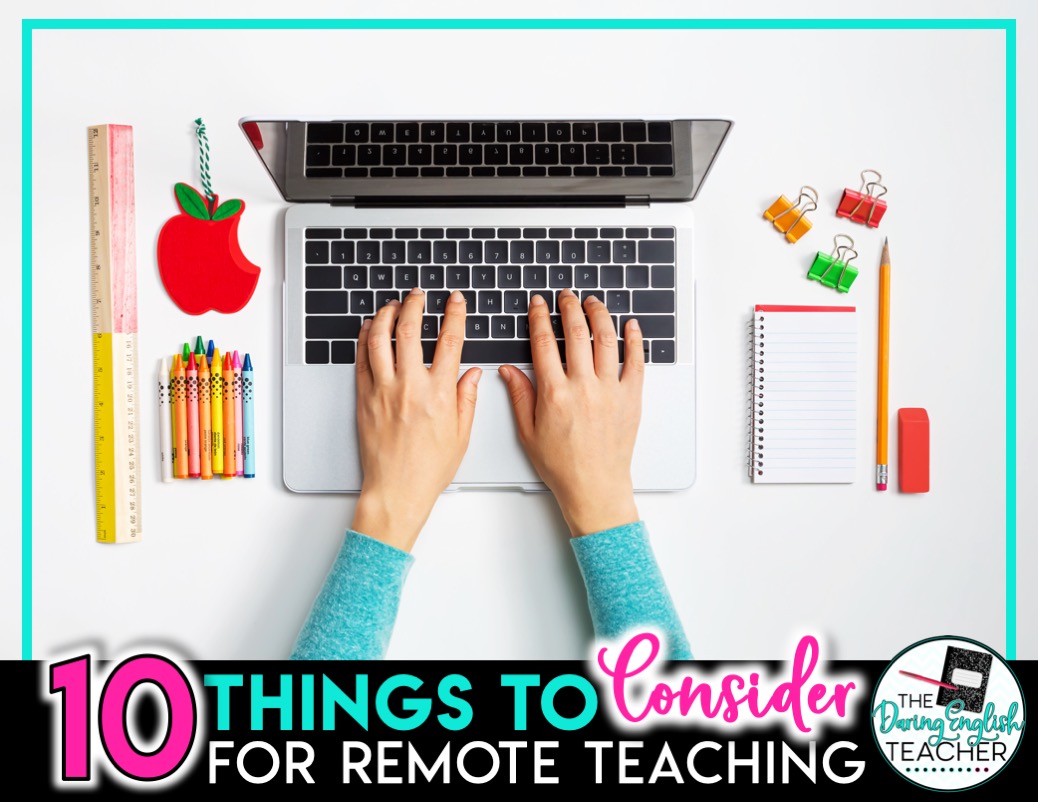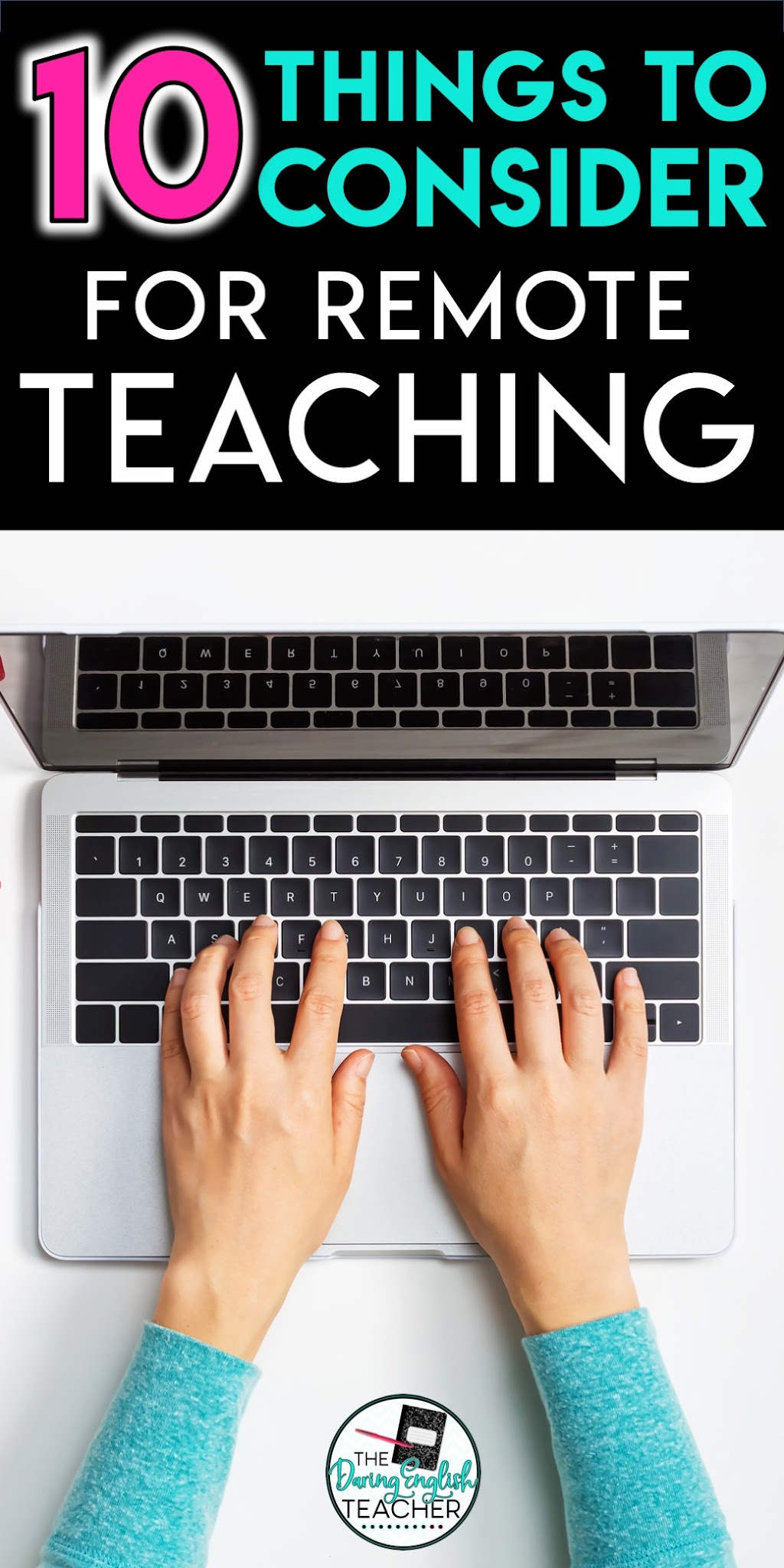With so many schools closed, teachers around the world are scrambling to find ways to hold classes and engage their students in remote learning. For some teachers, the ones who have been using technology consistently in the classroom and who have students with access to the Internet and devices, this isn’t a big challenge. However, for many teachers, those new to educational technology and those who teach students who do not have equitable access, the new challenge facing them seems unsurmountable.
I am very fortunate to be in a 1:1 classroom. I have a set of 40 Chromebooks dedicated to my classroom, and (for the most part) I have a reliable Internet connection in my room. Since I have access to tech in my classroom, I frequently use Chromebooks, Google Classroom, and a wide variety of tech sites with my students. Also, the majority of my students have access to wifi and at least a smartphone at home. However, I am not naive enough to believe that everyone is in that situation.
With that said, here are 10 things to consider when you start remote teaching.
1. Be flexible with your expectations
With remote teaching, students don’t have access to teachers like they would in the classroom. Students might not be able to communicate questions they might have effectively, and instructions might get misinterpreted. If assignments get turned in completed, but slightly off-topic, be flexible.
2. Show your students compassion
This is a nerve-wracking and anxiety-inducing time not just for adults, but also for our students. Middle school and high schoolers have a hard time understanding complex ideas, and oftentimes fear can take over. Being compassionate towards our students will go a long way.
3. Be understanding
Many of our students might be taking on additional responsibilities at home right now. It is very likely that they will have parents who work out of the house, and our older students might take on the responsibility of watching younger siblings. Plainly said, our students might not be distraction-free for a classroom video meeting.
4. Use familiar platforms
Now if not the time to introduce students to a variety of new websites and tools that you haven’t tested out in the classroom yet. Instead, focus your efforts on using what your students know, even if it really is just one platform. I wrote this post back in 2017 about some of my favorite sites.
5. Acknowledge that not every student has access
As our classrooms are shut down, we will see the gross disparities of access and equity rise to the forefront. It is so important to remember this and to acknowledge that some of our students simply do not have the means to engage in remote learning. We should not punish them for this. Instead, we should do our best to catch them up on content they missed when classes resume -whenever that may be.
6. Focus on just the essential skills
I totally get it. I am really bummed to be out of the classroom, too. I was just getting ready to finish a visual essay with my sophomores, and I was planning on having them create and design the final product this next week. I had it planned perfectly that our last week before spring break would be filled with creative vibes. However, our nation’s health is at stake, and it is what it is. I’m scrapping that idea. I simply can’t justify having my students create something like that without my help. During these next coming weeks, I’ll be focusing on essential ELA skills. In all honesty, if my students are reading, writing, listening, and thinking each day, I’m satisfied.
7. Check-in with your students
When I say check-in with your students, I’m not referring to those remind messages encouraging them to complete their work. I fully plan on sending out some messages to my students that aren’t academic. I’ll send simple hellos, ask how they are doing, and I might even ask what shows they recommend on Netflix. We can still work on building and fostering relationships with our students.
8. Don’t worry about assessments
In an ideal world, we would be able to stick to our curriculum maps and keep on keeping on. However, this isn’t ideal, and it is unfair to assess our students during this time. Not only is there no real way to completely mitigate cheating, but it also isn’t necessary. I would much rather have my students read an article and write about what they read than take an assessment. Especially since I can’t fully verify its validity.
9. Provide students with time to complete the work when class resumes
Access and equity are key here. Not all of our students will be able to fully participate in remote learning. That is okay. Extend some compassion to your students by allowing them to make up any work you assign during the closure.
10. Take it easy when you resume class
Our students are going to be a mixed bag when we finally return to the classroom. Some of our students will have completed every assignment, while others haven’t. Plan to spend those first few days back reviewing the skills together as a class.



